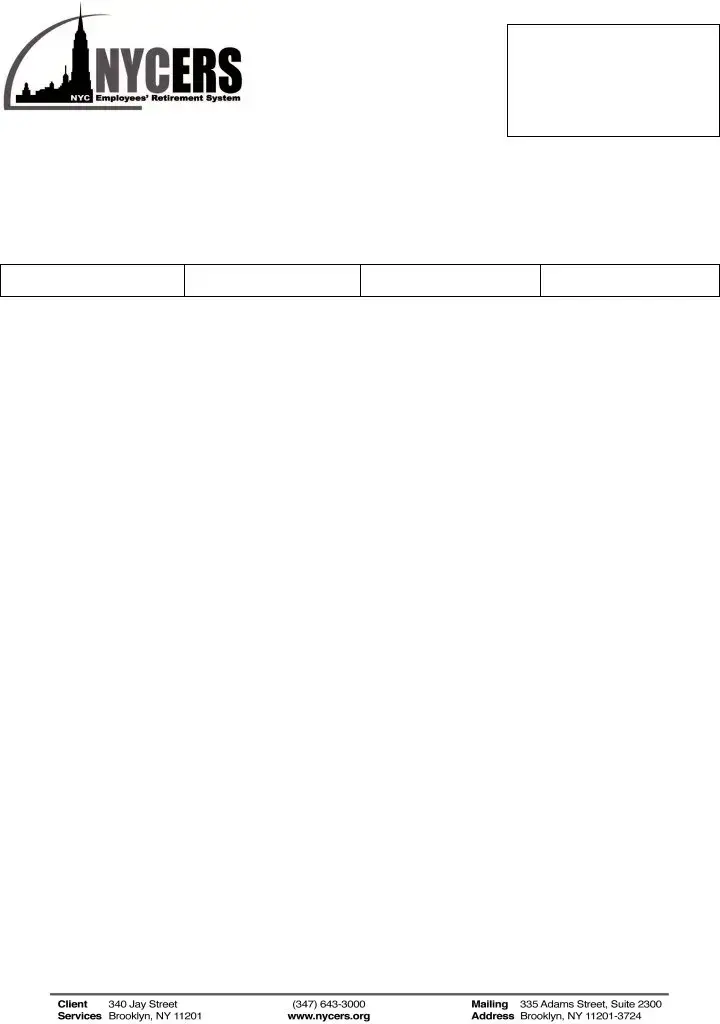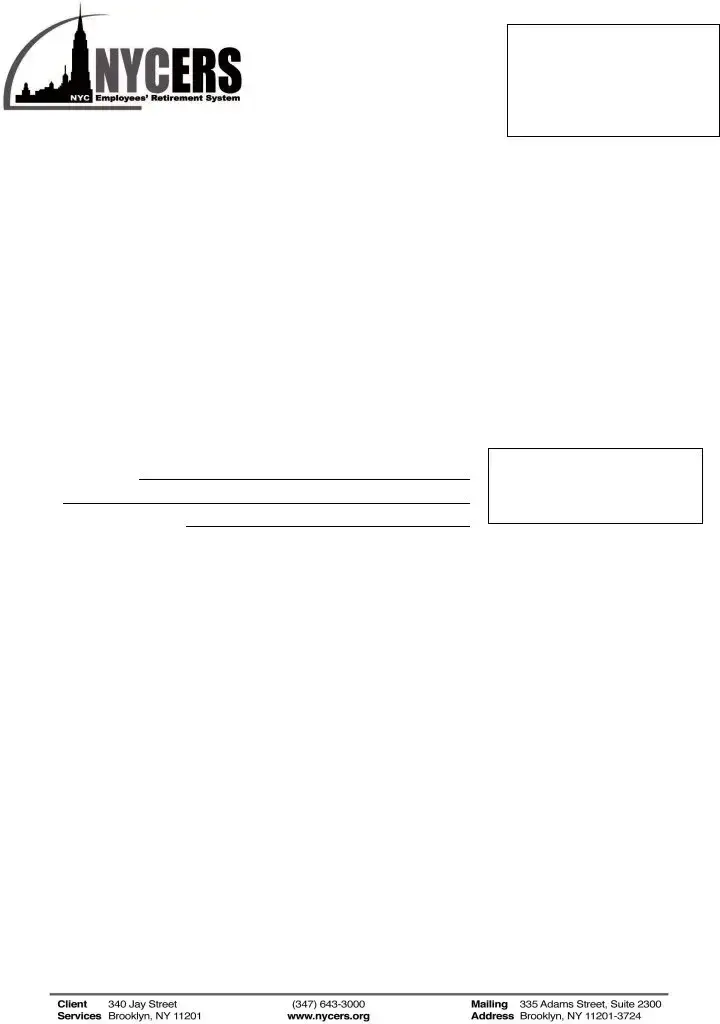The NYCERS F170 form, integral for EMTs seeking to elect for a special 25-Year Retirement Program, closely aligns with other documents in various retirement and benefit contexts. One such analogous form is the 401(k) election form commonly encountered in the private sector. Like the F170, a 401(k) election form enables employees to decide their contribution towards a retirement plan, specifies beneficiary details, and sometimes, investment preferences. Both documents formalize the participant’s intent and are essential for planning long-term financial security.
Similarly, the Thrift Savings Plan (TSP) election form used by federal employees mirrors the F170 in its purpose of retirement planning. The TSP form allows federal workers, including military personnel, to allocate a portion of their earnings towards a retirement savings plan. This parallels the F170’s provision for EMT members to contribute towards their specialized retirement program, emphasizing the universal need among workers to secure their financial future post-retirement.
Another document akin to the NYCERS F170 is the beneficiary designation form commonly found in life insurance policies. This form allows policyholders to designate who will receive the policy benefits upon their death, just as the F170 might include information relevant to beneficiary details in the event of the member’s death. Both forms ensure that benefits are properly allocated according to the participant or policyholder’s wishes.
The pension plan enrollment form is also comparable to the F170, as it is used by new employees or those newly eligible for pension benefits to enroll in a company or government-provided pension plan. Participants must provide personal information and make choices regarding their retirement benefits, which corresponds to the process of EMT members filing the F170 to elect participation in a specific retirement program.
Disability retirement application forms resemble the F170 in their focus on securing financial benefits for individuals unable to continue working due to disability. While the F170 is for EMTs electing a retirement program based on service length, disability forms cater to workers claiming retirement benefits based on health conditions, underscoring the broader category of securing future income under varied circumstances.
The change of address form, while administratively simpler, shares a practical connection with the second page of the F170 form. Both documents are vital for ensuring that correspondence and important documents reach the participant or member at their current address, maintaining the continuity and accuracy of communication.
The Direct Deposit Enrollment Form, used by individuals to initiate or change direct deposit details for various payments, is tied to the objective of the F170 in terms of financial transactions. Just as the F170 involves financial contributions towards a retirement plan, direct deposit forms facilitate the efficient transfer of funds, be it for payroll, benefits, or other disbursements.
Last but not least, the Individual Retirement Account (IRA) contribution form serves a very similar financial planning function as the F170. It’s used to designate contributions to either a Traditional or Roth IRA for retirement savings. Like the F170, it deals with the allocation of funds from the present earnings to support future financial security, emphasizing the importance of proactive retirement planning.
All these documents, while serving in different capacities and sectors, align with the NYCERS F170 form in their collective aim to secure a financially stable future for individuals in their retirement years, ensuring their decisions are documented and recognized legally.

